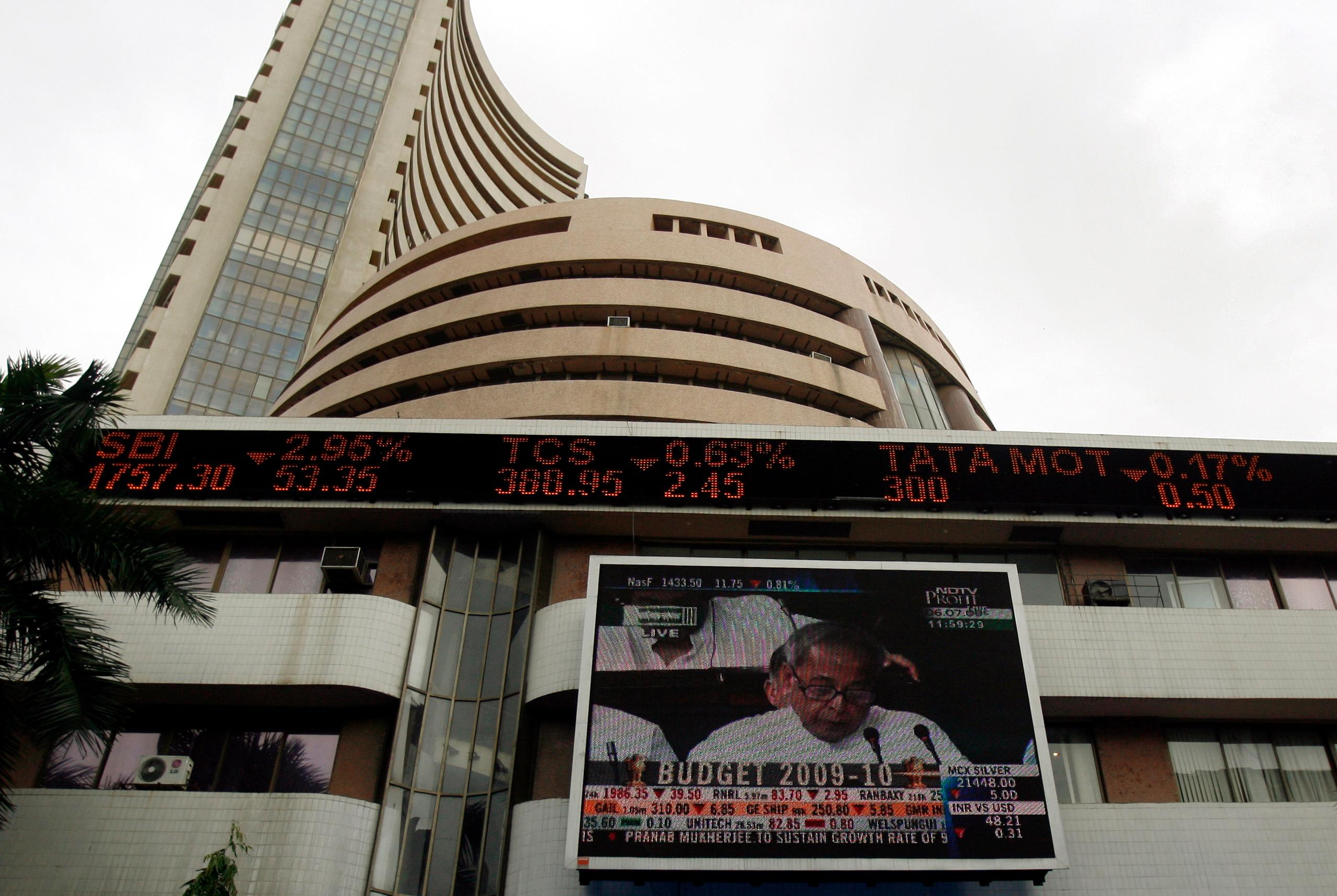Benchmark stock indices crashed on Monday after a better-than-expected rise in US jobs creation in February alarmed investors of an earlier-than anticipated rate hike in the world's top economy which may suck out liquidity from emerging markets such as India.
The 30-stock Sensex skid over 2 per cent to close at 28,844.78 while the 50-stock Nifty declined by a similar extent to end at 8,756.75 on Monday. Less than a week ago, Sensex hit a psychological milestone of crossing 30,000 mark in intra-day trades.
The Indian rupee, which has been stable over the recent past after a sharp depreciation a couple of years ago, tumbled by 50 paise against the dollar to Rs 62.66 on Monday.
The investors were responding to US economy adding 295,000 jobs in February, much more than what was expected, with unemployment rate falling to 5.5 per cent according to data released by the Labour Department during the weekend.
The data strengthens the view that the US Federal Reserve would start hiking interest rates sooner than anticipated this year. With a rate hike expected in June or even before, emerging markets might experience a capital flight like they did when the US Fed announced the tapering of its bond buying programme in June 2013.
Although it is well accepted that the US Fed will start raising the rates as economic growth picks pace in the country, how soon it would do so remains a puzzle. The robust employment data may just propel it to up the rates sooner than expected.
This would mark the Fed hiking rate from the historically low levels for the first time in more than six years.
Fed and the rate trail
Following the market crash of 2008 and the ensuing crisis in the US, the Federal Reserve decided to embark on unconventional monetary policy in the form of Quantitative Easing (QE). Under the programme, it bought mortgage backed securities and government bonds accumulating over $3.5 trillion on its balance sheet.
The Fed rate, which is the prime policy rate, has stayed between a range of 0-0.25 per cent since December 2008. With the US economy showing clear signs of recovery and the labour market improving, the Fed decided in its 2013 that it would start a tapering of its monthly buy back programme reducing $10 billion of purchases every month.
Although questions are being raised about the state of the job market with many Americans not seeking jobs formally and hence not counted as unemployed, the economy seems well on track.
The bond buying programme ended last October.
What it means for India and other emerging markets?
The impending US Fed rate hike would be coming at a time when growth in large emerging economies, often clubbed under the BRIC (Brazil, Russia, India and China) bracket, has tapered off. This has more to do with sanctions hitting Russia and commodity dependent Brazil along with China losing some of the growth momentum.
The question is whether India will be able to break out of the pack in terms of investments flow in light of it bucking the trend. Latest statistics show India's GDP growth has accelerated and it is expected to end FY15 with 7.4 per cent growth and official projections peg it to grow over 8 per cent in the coming year, which would strengthen its position as the fastest growing large economy in the world.
Are we ready?
The current account deficit, which has been under control thanks to crude oil price crashing and thereby bringing down the import bill, could again become a problem for India. On the positive side, the recent reports which suggest oil price could slip further by a third to around $40 a barrel, could come in to support the current account deficit even if the outflow of dollar leads to pressure on the rupee.
Madhumita Ghosh, research head at Augment Financial, expressed optimism: "I don't think the kind of impact we saw (today) will continue; the markets would get steady in the next one or two days. Within the emerging markets India stands out.”
“I think that markets will be a bit stagnant for some time; direction would come only after the quarterly results,” she said adding that the results per se are not expected to be very good.
Meanwhile, the RBI, which has been conscious of an impending Fed rate rise, has gone ahead and made a second rate cut a few days back, following its rate cut in January. It may now keep the interest rate in check before the Fed decides on its rate policy.
The central bank has stacked up enough reserves to control any volatility in rupee and to prevent a flashback of 2013 when value of the currency lost over a quarter of its value against the US dollar. According to data released last week by the RBI, India's foreign exchange reserve rose to record high of $338 billion for the week ended February 27, 2015.
(Edited by Joby Puthuparampil Johnson)






